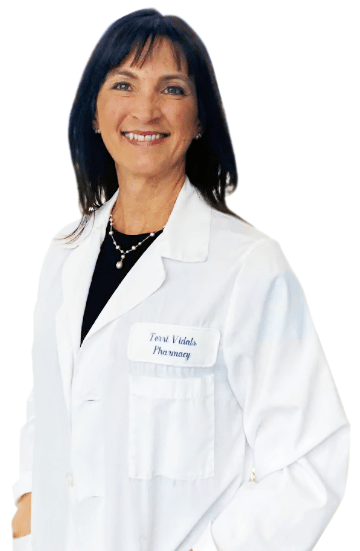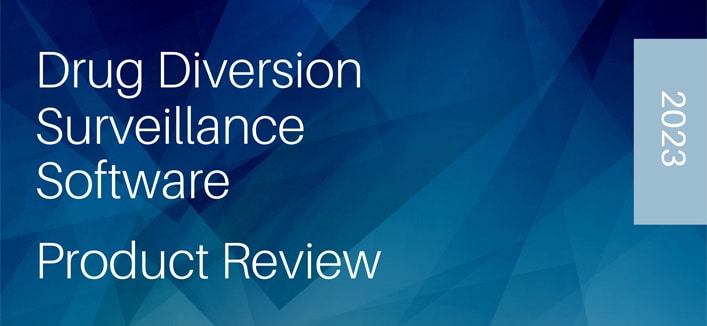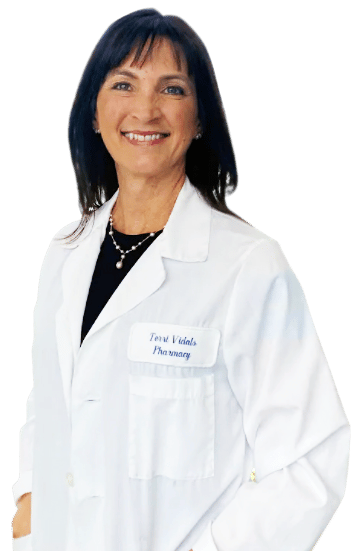Recovery Program for Licensed Healthcare Professionals in California by Terri Vidals
The first, in what I hope will be a series, on the recovery programs for healthcare professionals in each state. They vary significantly. Some are more comprehensive and work alongside the licensing board. Other recovery programs are independent of the licensing boards with some collaboration. There are, however, states where the licensing board is not involved in any way with recovery. It is important to understand the process and resources in your state. This podcast explains the process in California. For more information on the offerings of Maximus, go to their website www.maximus.com
Transcript:
Hello everybody. Welcome back. For those of you that are watching the video, you can see that it is just me. Today, I would like to do a series of interviews that highlight the different states and the recovery program process that they have when working in conjunction with the licensing boards. Some states don’t have anything that works in conjunction with the licensing boards. The licensing board kind of does their own thing. Sometimes they’re a little bit more punitive, maybe not very thorough. Other states have a seemingly fantastic arrangement with a recovery group that is very comprehensive. And I’m sure there are many that are kind of in between. I’m going to start today by highlighting California. The reason I am by myself is because I heard a fantastic presentation from the organization that does work with the licensing boards, but they have not responded yet with willingness to participate in an interview.
So I’m just going to go ahead and share with you all of the information that I heard on this fantastic presentation. There are two different pathways that a healthcare professional can take when going into a recovery program in California. The bulk of the time today will be spent on the recovery program called Maximus. They are the group that officially works with the licensing boards. Their program works with all of the licensed healthcare professionals with the exception of physicians, and they’re in the process of getting that piece of it back and working with them as well. So all of this pertains to everyone except for the physician group. And there will be some specifics that pertains to the Board of nursing because they were involved in this presentation. And so there was some additional information that highlighted what the Board of nursing does and what their role is.
The mission of Maximus’s recovery program, or for nursing, it is called the intervention program, is to protect the public above all else. They do that by returning the healthcare professional to safe clinical practice through intervention and rehabilitation. The program, as I mentioned, is for all healthcare professionals except for physicians, who are suffering from a substance use disorder and or mental illness. It is a monitoring program which provides ongoing support and case management. A participant will meet admission criteria if they are licensed and reside in the state of California. They have a substance use disorder and or a mental illness, and they themselves request voluntary admission into the program. That doesn’t mean that they have to go to Maximus before they’ve been interviewed at their healthcare facility for having some sort of diversion. It just means that when they are caught, shall we say, that they agree to go into the Maximus program.
So I suspect, although we didn’t really talk about this, that somebody could just pick up the phone and call Maximus on their own and start there, as opposed to the licensing board having received a complaint about them. But either way, when the time comes, they need to agree that they will participate in the program. They do not meet criteria for this program. If number one, they have been previously disciplined by the board for a substance use disorder or a mental illness, or previously terminated by the recovery program or a similar program for non compliance. In the case of the Board of Nursing, for every person that has a complaint filed with the Board of Nursing, they will reach out to that nurse and let them know that this program exists. One of the reasons that I want to do this series is because I think when we confront a healthcare professional that we suspect of diversion, we owe it to them to really tell them what their options are and what’s available.
So I think it’s really important for each state to know this and incorporate this into their whole program. Maximus’s process is the following. They have an intake coordinator, phone, case manager on call 24/7. So each new case 24/7, they have a case manager that will do a clinical assessment on the person. And then they will provide that person with a list of services that are appropriate for their level of care, because it will vary depending on what the situation is. And then after that, when this person will pick their own place that they want to go for the actual recovery piece of it. The case manager will stay in regular contact with the participant. Maximus will monitor the treatment plan and work with the treatment provider, which involves getting various reports, staying in regular contact with the treatment provider. Once the treatment is complete, maximus will continue to monitor with drug testing, provide ongoing support with support groups and case management, which includes work site monitoring.
Should the participant end up going back into the workplace. The case manager will also collaborate with the licensing board on the treatment plan, so they stay in communication. So Maximus is kind of like the bridge. It helps that assessment. And once the participant has decided where they’re going to go for treatment, they stay in touch with that treatment program. They liaison with the licensing board and they’re kind of the glue that fits everything together to make sure that participant is getting what they need and the resources for what they need. Any community support group that is appropriate to the participant’s needs and is an abstinence based program is fine with Maximus. The participant can choose. They right now are abstinence based only, but they are looking at buprenorphine treatment with some sort of a fit for duty assessment that they can incorporate into their program.
When it comes to drug testing, they do coordinate with that. They use only certified labs for their drug testing. And they do have a process in place for people that are homebound participants. And so they have this kind of worked out. So that is an option as well too. And that is random testing and they have their whole procedure in place for that. What is apparently unique to California, they say it’s unique, so we’ll find out eventually. But they have a committee that formally reviews and accepts participants into the program. And then they stay involved and monitor their participants. And then they formally graduate them from the program. And the committee is involved in all of that and decisions all along the way for this for and with this participant. If a licensed professional chooses to go into the Maximus recovery or intervention program, then one of the benefits is that there is no mention of any action against their license while they are on that program.
So you know how you can go on like the Board of Nursing’s website and you can see, oh, this person is suspended or on probation. You’re not going to see any of that while the person is in the Maximus program. I believe it might say inactive, but that could be for all kinds of reasons. In one state, I made my license inactive because I just wasn’t working there and didn’t want to keep up with all the requirements, right? So inactive could mean anything. Once they graduate, then their record of participation in the program goes away. Of course, Maximus keeps and has a record of that, and the licensing board has a record of that. But as far as they’re concerned, they’re done, they’ve graduated. It’s as if a complaint was never filed. And if a participant fails to graduate from the program, then the Board of nursing will take it down a disciplinary pathway, which is very different.
And then we would see that listed on the website. But that’s a benefit of going through the Maximus program. Once the participant graduates from the program, then as I said, the complaint is gone. And it’s like they’re starting from scratch while they’re in the program. If the participant feels that they are ready to return to work, then they have to make that request, a formal request that goes before the committee. And the committee uses several pieces of criteria to determine whether they think it’s a good idea and that the person is ready to go back to work. A work site monitor is definitely part of the requirements, and Maximus will then coordinate and work with the facility so that the facility knows what is required if they’re going to participate in this work site program and will adhere to the regulations or to the requirements.
So now Maximus is working with the treatment center. They’re liaisoning with the licensing board, and now they will coordinate with the facility to bring that person back in and give them another opportunity. In terms of payment with Maximus, there are several things that Maximus actually doesn’t charge for. So I believe the initial, the intake and the assessment were of no charge when the participant picks the treatment program that they’re actually going to go to, that has nothing to do with Maximus. And so that would be covered by the participant or their insurance, if they have it. The support groups that they need to get hooked up with do have some cost, so the participant needs to pay that. And then of course, there are drug testings that are mandatory, and the participant needs to pick up those costs as well. They’re not hugely substantial, but of course they’re going to add up over time.
The length of time in this program, it varies depends on the situation, but it’s typically three to five years, so it is no small duration. And I think that’s because it sounds like it’s pretty thorough and they want to make sure that different milestones have been reached and the participant really goes through and completes the entire program with less chance of recidivism. So let’s talk about that. Now, relapse, which is when someone returns to substance use while in the program. Relapse for the general population is 60% to 70% within the first four years of recovery with the Maximus program, their relapse rate is 12%. That is quite a bit less. So that says to me that this program, whatever they’re doing, is fairly successful to go from a 60% to a 12% rate recidivism. The definition of that is that the person graduates from the program.
So we’re looking at three to five years later, they’ve graduated from the program, done everything they were supposed to do, and everything looks great. Recidivism for this Maximus program, she didn’t have the exact statistics, but she knew that it was under 10%. So for those of you in California, if you’re thinking about reintegrating these people back into your facility after they go through the program, that’s what you’re looking at. It’s pretty good statistics, really, for that. Now, I had mentioned that there was an alternate route that people can go through, right? So you’ve got a healthcare professional that has been reported to their licensing board, and we’re going to talk specifically about the nursing board because that’s what I have the most information on. And they say, no, I’m not doing this, I’m not going through Maximus. They can choose to go outside of this coordinated program and do whatever they want, go to any recovery program they want, and handle it completely on their own.
But it looks very different from a board of nursing perspective. If somebody chooses to do that, they’re doing what they call the disciplinary route. The board places them on suspension. We can all look that up on the website and see that somebody has been suspended. And so it’s out there for the world to see. Unlike the Maximus program, which expects somebody to relapse. And I failed to mention that when you’re in the Maximus program, if you relapse, that’s expected, it’s a disease, like any disease, and there is a relapse rate, and they will be patient with you. They may have to kind of start back at the beginning and pull in that funnel a little bit. But they’ll try it again, they’ll give you another chance. And they’ll do this two, three times. I mean, there are some criteria and at some point where they may just say, okay, that’s it, this isn’t working.
But they expect it to happen, and they will work with you when it happens. Unlike the person that chooses to go outside of the Maximus program and go on the disciplinary track. So now they are just reporting to the licensing board. They will not allow a relapse. It’s a one and done. So if they relapse, then they will move toward further actions with the Attorney General and work on what they need to do to remove your license permanently. The program outside of Maximus is not considered a rehabilitatory program. It is a disciplinary action. And so that’s very different. What the participant, what the healthcare professional pays for, is very different. It is not offset by the Maximus program in any way. So all of it is up to the healthcare professional, including, I believe, the cost of the investigation. And all of these details are on the California Board of Nursing website.
Under disciplinary guidelines, they talk you through exactly what you’re responsible for and what the expectations are for somebody going the disciplinary route. And again, I mentioned, if they’re placed on probation, then it’s going to be front facing for everybody to see. And so people are going to know that there’s some disciplinary action to go through. So I asked them, why would somebody choose to go outside the Maximus program? And really what it comes down to is the healthcare professional at the time is just not ready to voluntarily commit to the fact that they need help. Or maybe they think they can go it on their own and they don’t quite realize what that’s going to entail or what that’s going to look like in terms of the Board of nursing. But for whatever reason, there are these two pathways that you can go down. If you are a licensed professional in California, I will put the contact information up for Maximus so you have a phone number.
But again, as I mentioned, I think that it’s important to offer this information to our healthcare professionals when we are having that discussion with them about suspected diversion, so that they know where they can get the help. Because we’ve talked about before, people are very vulnerable at that time of intervention, and we got to get them plugged in as soon as possible. So that’s it. That’s the details as I have them before, California, which sounds like a very robust program to me. And as we work our way through the states, we’ll see how they vary. And my goal, again, is to give you that information so every state knows what the details are and how they can explain that to their healthcare professional and give them the resources needed to get plugged in to get help. All right, thank you for listening, everybody, and we’ll see you next time.




